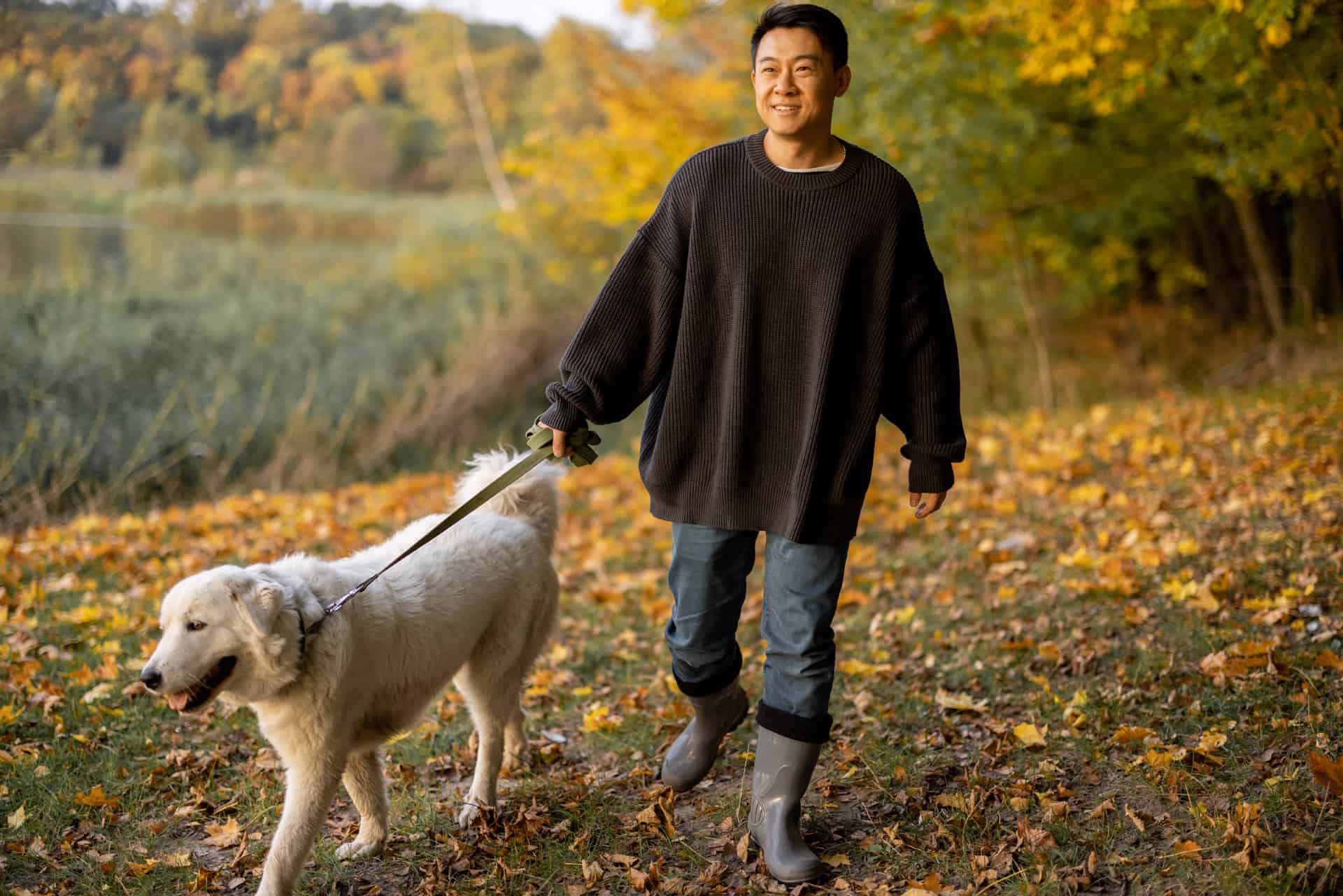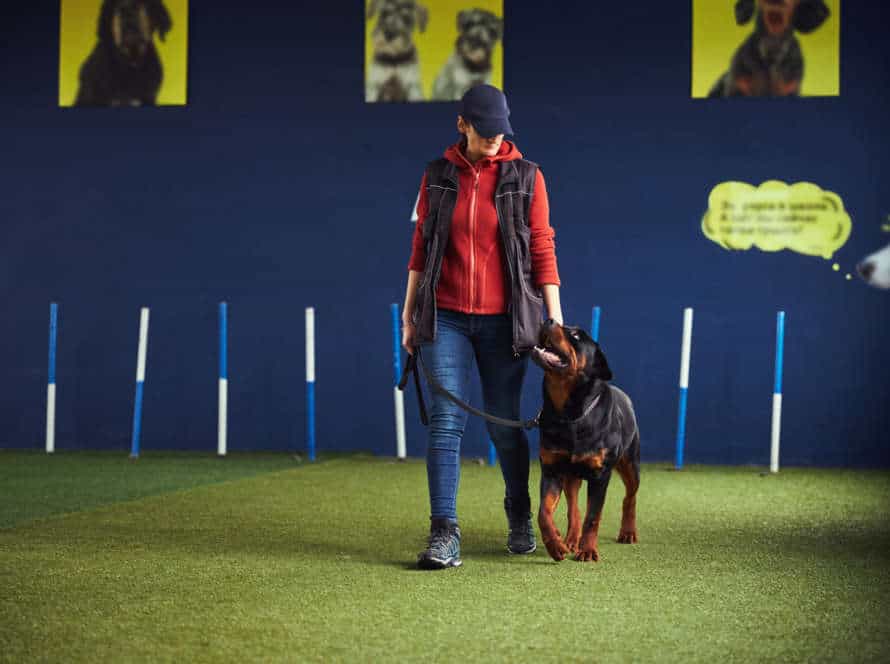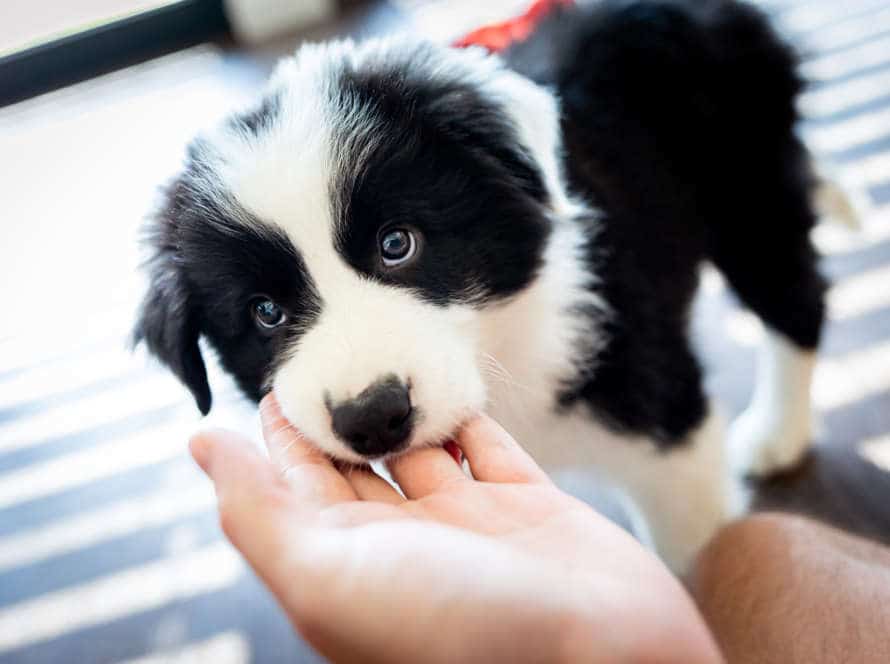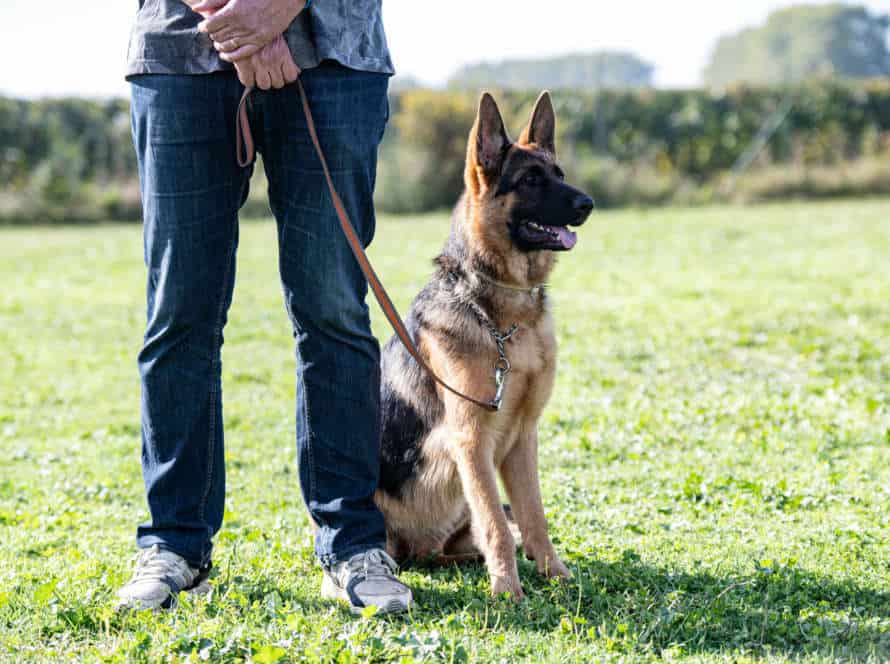Understanding the Heel Command
Heel command is essential for dogs. It helps keep them close to you when you’re out walking. To have your pup perform the command perfectly, there are some key points to remember. Teaching the heel command encourages consistent performance and reinforces that your pup should stay near you at all times.
Importance of obedience and consistency
Obedience & consistency are vital when teaching your pup the heel command. This command teaches your doggie to walk near you without tugging.
To get the heel command just right:
- Use a clear & firm voice when giving the command.
- Keep the leash short to prevent straying.
- Start training in an environment with little distractions. As your pup builds skill & confidence, increase the level of distractions.
- Reward them for every success & stay patient.
Teaching obedience & consistency with the heel command strengthens your bond & improves their behaviour for a healthier life together.
Significance of the heel command for dog training
The heel command is very important in dog training. It makes sure there’s a good experience for both the pet and their owner. “Heel” means teaching dogs to walk beside you, not pulling on the leash, jumping, or acting up. This gives you better control.
These steps can help:
- Start with your dog on your left side.
- Say “heel” in a firm but gentle voice.
- Walk in a direction of your choice with your dog.
- If they go ahead, pull them back and say “heel”.
- Keep doing this, gradually increasing speed and distance.
- With practice and rewards, your dog will obey the heel command.
Basic requirements for the heel command
The Heel Command is an important part of dog training. It teaches the dog to stay close to its owner, not pulling or straying. To learn it, you need:
- Leash Training – Put the dog on a leash for training.
- Positive Reinforcement – Give treats or praise when the dog walks correctly.
- Consistency – Be consistent with instructions and expectations.
- Patience – It takes time and patience. Repetition and reinforcement are needed to train the dog.
With practice and reinforcement, your dog will learn the Heel Command and make walks more fun for both of you.
Reinforcing the Heel Command
Train your pup the ‘heel’ command! It means to stay close and walk together. For consistent performance, reinforcement is key. Here’s how: various strategies and techniques exist to reinforce this command. Check out this article for more info!
The fundamentals of reinforcing the heel command
For reliable performance from your pup, reinforcing the heel command is essential. To aid you, here are some great tips:
- Positive reinforcement – Reward or praise your dog each time they do the heel command correctly.
- Consistency – Reinforce the heel command every time you give it, so your pup learns to link the command with the behavior.
- Practice regularly – The more you practice the heel command, the better your pup will get.
- Correct bad behavior – If your pup doesn’t follow the command, say “no” firmly and try again.
With these basics, you can train your pup to do the heel command consistently, making walks and outings enjoyable for both of you.
Making use of rewards and positive reinforcement
Training your dog to heel requires positive reinforcement. This includes rewards and praise. For rewards, give high-value treats like cheese or meat. Praise your pup with a happy voice, petting, and play. To make the behavior stick, use frequent rewards and praise. As your pup gets better, phase out the treats. Timing matters! Give the reward right away, so your pup knows it’s for the behavior.
Using the ‘Sit-Stay-Heel’ tactic to reinforce the heel command
“Sit-Stay-Heel” is a great tactic for teaching the heel command to your pup. Here’s what to do:
- Get your pooch to sit at your side.
- Say “stay” and wait a few seconds.
- Command “heel” and take a few steps to the right.
- Use a clicker or verbal cue when your pup does it right.
- Repeat, making the “stay” longer and the walk further.
With practice, your pup will learn to stay close to you. Pro-tip: Positive reinforcement – like treats or praise – can help your dog during training.
Addressing Common Challenges while Reinforcing the Heel Command
Reinforcing the “Heel” command is crucial for training dogs to obey you. But, there can be challenges along the way. Let us investigate these challenges and find out how to tackle them for success!
Addressing stubbornness in dogs
Dogs can be stubborn. Heel command training can help. Here are tips:
- Start with basic obedience training, like sit, stay, and come.
- Reinforce with treats or praise when the heel command is followed.
- Train in a quiet, distraction-free space. Gradually add more stimuli as your dog gets experienced.
- Be consistent with commands and rewards. Don’t punish mistakes. Redirect to the proper behavior.
- Practice often. Gradually make training harder to reinforce skills and obedience.
Knowing when to stop the training session
Training your pup to heel? Know when to wrap it up! Too long, and it’ll be a bummer. Here are 3 signs to stop:
- Your dog seems tired or bored. Sessions can lead to exhaustion and disinterest.
- They aren’t getting your commands. It’ll cause stress for both of you.
- You’re running out of time or patience. Take a break if you’re feeling restless.
Short and frequent sessions work best to reinforce the command. Plus, reward them for good performance!
Troubleshooting issues that may arise during training
Training your pup to heel is vital for owners. Being consistent is key, however, there can be problems that make it hard to reinforce the command. Knowing and trying to fix them can help you get better results with your canine.
Common issues with reinforcing heel include:
- Leash pulling: Fix this by stopping and waiting for your pup to go back to your side before going on.
- Distracted behaviour: Keep them engaged by rewarding them with treats, praises and play.
- Incorrect leash use: This is a mistake many dog trainers make. Use a short leash to ensure you have control and guide your dog.
By tackling these problems, you can reinforce the heel command and advance your dog’s training.
Advanced Tips for Reinforcing the Heel Command
Reinforcing the heel command is vital for consistent obedience and performance in dog training. It’s important that they comprehend it, that’s why regular practice and reinforcement are a must.
In this article we will talk about advanced tips for reinforcing the heel command. The importance of timing, how to make a successful reinforcement plan and the benefits of praise will be mentioned.
Practising off-leash heeling
Off-leash heeling can be tricky, but is key for reinforcing the heel command. Here are advanced tips to help you succeed:
- Begin training in a place with low distractions. As your pup gets better, increase the difficulty.
- Give a clear verbal cue, like “heel” or “with me,” to signal it’s time to walk.
- Use a visual cue too, like holding your hand a certain way.
- Reward with treats or praise when they obey the heel command correctly.
- Gradually work up to off-leash heeling in a secure, fenced area.
Pro tip: Practice and rewards help make off-leash heeling reliable!
Teaching your dog to heel even during distractions
Training your pup to stay close, even when distracted, needs some super tips. Here’s what to do:
- Gradually add other pooches, people, or items to increase distractions.
- Reward your pup with treats, verbal compliments, and petting when he obeys the ‘heel’ command.
- Be consistent and patient with training.
- Use a shorter leash for more control.
- Practice in various places, to help your dog learn the command in all situations.
By practicing diligently, with lots of patience and consistency, your pup can master the ‘heel’ command even with distractions.
Using a clicker for advanced heeling training
Clicker training can help reinforce the heel command with your pup. Here are some tips for advanced heeling training:
- Begin by teaching basic clicker commands and shaping behavior with treats.
- Use the clicker to mark desired behaviors like the dog walking in a certain position or avoiding distractions.
- Immediately reward the dog with a treat after clicking to reinforce the behavior.
- As the dog becomes more consistent, reduce the frequency of treats and clicks.
- Introduce distractions and keep reinforcing the heel command with clicker and treats.
Pro Tip: Consistency is key! Remain patient and reward your pup for each improvement towards the desired behavior.
Maintaining Consistent Heeling Performance
Teach your pup the heel command. This is key for good leash control. You can keep consistent performance during walks and new environments if you reinforce the heel command. Make sure your pooch is responding to your commands and behaving in a way that is both safe and enjoyable.
Let’s check out how to reinforce the heel command for continuous performance.
Scheduling regular training sessions
To get your pup to heel, regular training sessions are essential. Here are some tips to help you maintain consistent heeling performance for your dog.
- Schedule regular training: Plan daily, short intervals for training, starting off indoors or in a low-distraction environment.
- Be consistent: Use same commands, tone of voice, and rewards.
- Offer rewards: Treats, praise, or toys for good performance!
- Take breaks: Watch for signs of fatigue, boredom, or frustration.
- Practice with distractions: Gradually add distractions. Practice the heel command in busy areas.
Follow these tips and your pup will walk at your heel effortlessly. Pro tip: Training should be enjoyable for both of you. Keep sessions short and sweet!
The importance of long-term reinforcement
Reinforcement over time is key to keeping dogs heeling consistently. They need lots of practice and reminders, especially as they grow older and come across novel scenarios.
There’re a few ways to reinforce the heel command:
- Regular training: Set up consistent training sessions with your pup to practice the heel command and other obedience skills.
- Positive reinforcement: Employ positive reinforcement techniques like treats, compliments and toys to reward your dog for heeling correctly.
- Consistency: Make sure everyone in the house uses the same verbal commands, and reinforces the same heeling behavior, to avoid confusing your dog.
- Patience: Be patient while working with your dog, remembering that continual heeling requires time and repeated reinforcement.
By continually reinforcing the heel command, you can help your dog ace this essential skill, and keep their obedience and behavior in all sorts of situations.
Strategies for incorporating heeling into everyday life
Heeling is a key obedience command for canines. With the correct strategies, it can be a natural part of your dog’s conduct. Here are some useful tactics for including heeling into everyday life and reinforcing the heel command for steady performance:
- Practice heeling daily, start in a low-distraction spot and increase the complexity gradually.
- Utilize consistent verbal and physical cues for the heel command. Praise or give treats to your dog when they do it right.
- Heeling should be part of everyday activities, such as walks, trips to the park, and playing fetch.
- Use positive reinforcement training techniques like clicker training and shaping to motivate your dog to follow you.
By persistently doing these strategies, you can reinforce the heel command and make heeling a natural and enjoyable part of your pup’s behavior.
Pro tip: Be patient and consistent in your instruction and reward your pet for good behavior. Eventually, heeling will become a reflex for your furry friend.
Frequently Asked Questions
1. What is the heel command in dog training?
The heel command is a fundamental aspect of dog training in which the dog learns to walk alongside its handler in a controlled and consistent manner.
2. Why is consistent reinforcement important when it comes to the heel command?
Consistent reinforcement is critical in dog training because it helps to ensure that the dog understands what is expected of it and reinforces the behavior so that it becomes habitual. Without this consistency, the dog may become confused and not know what to do.
3. How can I reinforce the heel command in my dog?
There are several ways to reinforce the heel command, including using positive reinforcement techniques such as treats, verbal cues, and physical cues like a gentle tug on the leash. Consistent practice and repetition are also key to reinforcing the behavior.
4. What are some common mistakes to avoid when reinforcing the heel command?
One common mistake is being inconsistent with reinforcement, which can confuse the dog and make it more difficult to reinforce positive behavior. Another mistake is using punishment or harsh training methods, which can be counterproductive and lead to anxious or aggressive behavior in the dog.
5. How can I troubleshoot common issues with the heel command?
If your dog is struggling with the heel command, it may be helpful to break the behavior down into smaller steps and practice each one individually. You can also work with a professional dog trainer who can help you identify and address issues with your dog’s behavior.
6. How long does it take to reinforce the heel command in my dog?
The amount of time it takes to reinforce the heel command in your dog can vary depending on a range of factors, including the dog’s age, breed, and prior training experience. Consistent and patient practice is key to reinforcing the behavior and achieving consistent performance.







